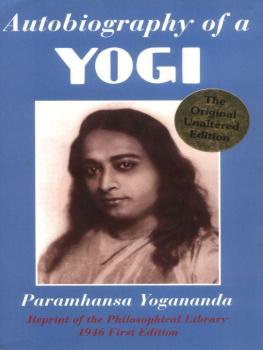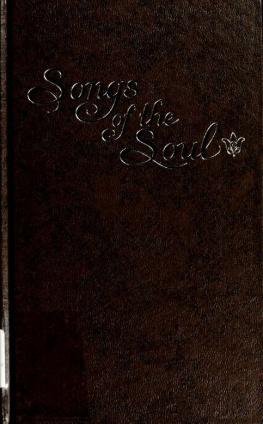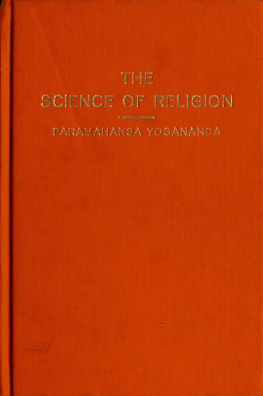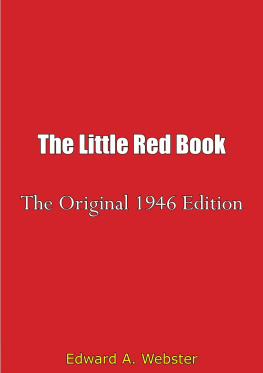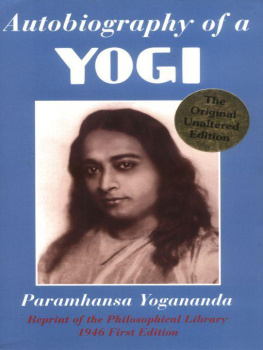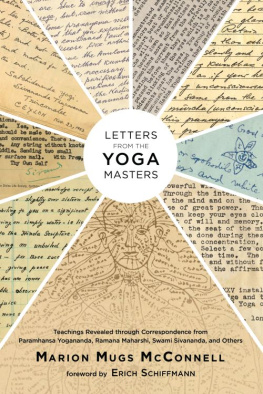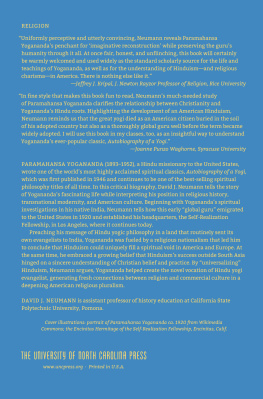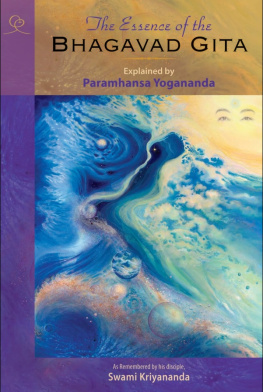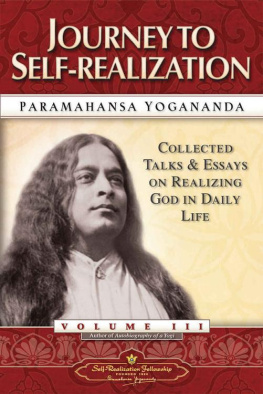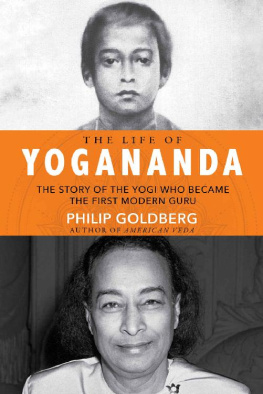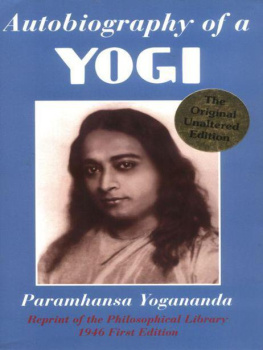Table of Contents
INTRODUCTION
What you hold in your hand is not an ordinary book. It is a spiritual treasure. To read its message of hope to all truthseekers is to begin a great adventure.
Paramhansa Yogananda was the first yoga master of India whose mission it was to live and teach in the West. In the 1920s, as he criss-crossed the United States on what he called his spiritual campaigns, his enthusiastic audiences filled the largest halls in America.
His initial impact was truly impressive. But his lasting influence is greater still. This single volume, Autobiography of a Yogi , first published in 1946, helped launch, and continues to inspire, a spiritual revolution in the West.
Only rarely does a sage of Paramhansa Yoganandas stature write a first-hand account of his life experiences. Childhood revelations, his visits to saints and masters of India, the years of training he received in the ashram of his guru, and long-secret teachings of Self-realization are all made available to the Western reader. Followers of many religious traditions have come to recognize Autobiography of a Yogi as a masterpiece of spiritual literature. Yet for all its depth, it is full of gentle humor, lively stories, and practical common sense.
This is a verbatim reprinting of the original 1946 edition of Autobiography of a Yogi . Although subsequent printings, reflecting revisions made after the authors death in 1952, have sold over a million copies and have been translated into more than 19 languages, the few thousand of the original have long since disappeared into the hands of collectors.
Now, with this reprint, the 1946 edition is again available, with all its inherent power, just as the great master of yoga first presented it.
PUBLISHERS NOTE
The release of this original edition is especially timely, coinciding as it does with the 100th anniversary of Paramhansa Yoganandas birth in 1893.
This reprint is identical to the text of the first edition, published in 1946, by Philosophical Library in New York City. We have closely followed the cover design and layout of the original. The look and feel of the first edition have been preserved through the use of typefaces which are comparable to the hand-set type used in 1946. This volume also contains reproductions of the photographs from the original edition.
Although Yogananda himself participated in preparing both the second and third editions of the Autobiography of a Yogi , correcting spelling and grammatical errors and addressing questions raised by his readers, there is a unique power to the original that we feel is particularly worth preserving. In order to be faithful to the original edition, we have not corrected errors of spelling, grammar, or punctuation.
Editions past the third have been prepared since the authors passing in 1952. In 1953, Self-Realization Fellowship, the organization founded by Paramhansa Yogananda in Los Angeles, California, acquired the rights to Autobiography of a Yogi from Philosophical Library; it has been the publisher of all subsequent editions, until this original reprint put out by Crystal Clarity, Publishers.
Crystal Clarity, Publishers, is the publishing house of Ananda Church of Self-Realization.
Ananda, dedicated to the dissemination of the teachings of Paramhansa Yogananda, was founded in 1968 by one of Yoganandas direct disciples, J. Donald Walters (Kriyananda).
If you find this book inspiring and would like to learn more of the life and teachings of Paramhansa Yogananda, Crystal Clarity has many resources to share with you. For more information, call or write Crystal Clarity, Publishers, 14618 Tyler Foote Road, Nevada City, California 95959, 1-800-424-1055.
Copyright, 1946, by Paramhansa Yogananda
Printed in Canada
1946 First Edition, First Printing Published by
THE PHILOSOPHICAL LIBRARY, INC.
15 East 40th Street
New York, N. Y.
1995 Reprint of the 1946 First Edition Published by
10 9 8 7 6
ISBN 1-56589-734-X
ISBN 1-56589-108-2 paperback
Dedicated to the Memory of
LUTHER BURBANK
An American Saint
PREFACE
By W. Y. EVANS-WENTZ, M.A., D.Litt., D.Sc.
Jesus College, Oxford; Author of
The Tibetan Book of the Dead,
Tibets Great Yogi Milarepa,
Tibetan Yoga and Secret Doctrines , etc.
THE VALUE of Yoganandas Autobiography is greatly enhanced by the fact that it is one of the few books in English about the wise men of India which has been written, not by a journalist or foreigner, but by one of their own race and trainingin short, a book about yogis by a yogi. As an eyewitness recountal of the extraordinary lives and powers of modern Hindu saints, the book has importance both timely and timeless. To its illustrious author, whom I have had the pleasure of knowing both in India and America, may every reader render due appreciation and gratitude. His unusual life-document is certainly one of the most revealing of the depths of the Hindu mind and heart, and of the spiritual wealth of India, ever to be published in the West.
It has been my privilege to have met one of the sages whose life-history is herein narratedSri Yukteswar Giri. A likeness of the venerable saint appeared as part of the frontispiece of my Tibetan Yoga and Secret Doctrines. It was at Puri, in Orissa, on the Bay of Bengal, that I encountered Sri Yukteswar. He was then the head of a quiet shrama near the seashore there, and was chiefly occupied in the spiritual training of a group of youthful disciples. He expressed keen interest in the welfare of the people of the United States and of all the Americas, and of England, too, and questioned me concerning the distant activities, particularly those in California, of his chief disciple, Paramhansa Yogananda, whom he dearly loved, and whom he had sent, in 1920, as his emissary to the West.
Sri Yukteswar was of gentle mien and voice, of pleasing presence, and worthy of the veneration which his followers spontaneously accorded to him. Every person who knew him, whether of his own community or not, held him in the highest esteem. I vividly recall his tall, straight, ascetic figure, garbed in the saffron-colored garb of one who has renounced worldly quests, as he stood at the entrance of the hermitage to give me welcome. His hair was long and somewhat curly, and his face bearded. His body was muscularly firm, but slender and well-formed, and his step energetic. He had chosen as his place of earthly abode the holy city of Puri, whither multitudes of pious Hindus, representative of every province of India, come daily on pilgrimage to the famed Temple of Jagannath, Lord of the World. It was at Puri that Sri Yukteswar closed his mortal eyes, in 1936, to the scenes of this transitory state of being and passed on, knowing that his incarnation had been carried to a triumphant completion.
I am glad, indeed, to be able to record this testimony to the high character and holiness of Sri Yukteswar. Content to remain afar from the multitude, he gave himself unreservedly and in tranquillity to that ideal life which Paramhansa Yogananda, his disciple, has now described for the ages.





